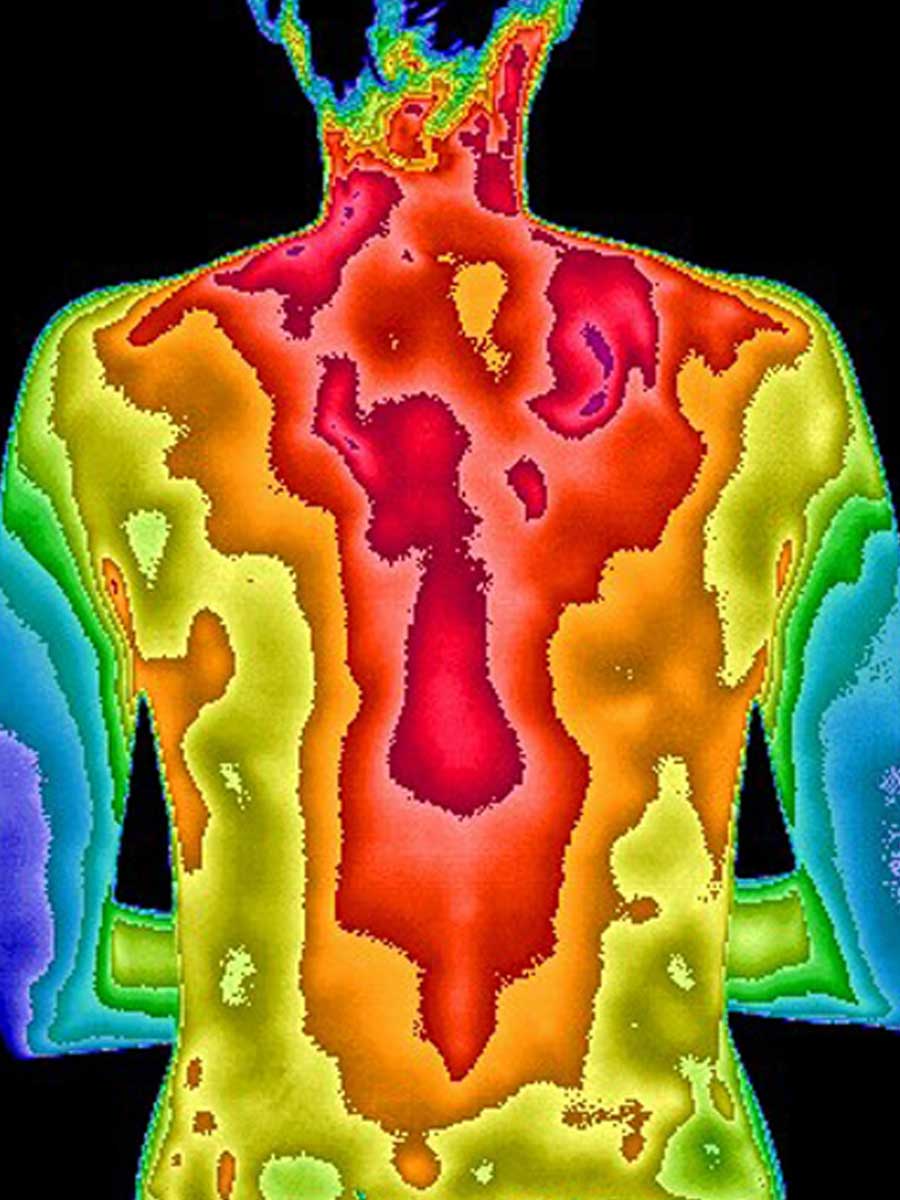Body Thermography
What most of us are accustomed to when we think of medical imaging is the use of X-ray, CT, MRI, or ultrasound. All of these tools are primarily structural imaging technologies; they look inside the body for structural changes such as broken bones, soft tissue damage, tumors, and organ pathologies. What separates these technologies from thermography is that thermography detects infrared (heat) markers that reflect the body’s subtle underlying chemical and nervous system signals. This allows us to look at how the body is functioning. These neurochemical signals may be the only sign that a problem exists, a remnant of injury indicating that healing has not finished, or a signal sent in advance of significant damage to the body. With this information in hand, you and your health care provider can outline a method for treating a current problem or possibly preventing future problems before they cause significant damage.
Many patients worry about the future and diseases they may never have, while the conditions that commonly arise are the ones that erode your ability to enjoy life. The number one reason that drives patients to seeing their doctor is pain. Many of these same patients are left with treatments that offer little to no relief. Just look at the drug counters at stores like Costco. We now have Ibuprofen in 1000 tablet bottles. This was unheard of 10 years ago. Patients are in chronic pain due to unresolved inflammation and other sources. Their quality of life is being destroyed. What we are seeing is a large population of patients being treated for pain conditions they don’t have. In other words, no one has found the root cause of their pain. Thermography has helped so many patients return to their normal active lives by getting to the source of the problem so that proper treatment can be directed.
With the ability to detect areas of inflammation, thermography also offers an important role in sports-injury management. By detecting signs of inflammation before symptoms arise, thermography may be able to warn of an impending injury. The technology may also aid in the assessment of post-injury healing by helping to direct proper care and warn that the athlete may not be field ready. With recuperation as a significant factor, thermography also has the ability to play an important role in warning for over-training syndromes.
The applications of thermography are broad and range from simple soft tissue injury to a risk assessment marker for breast cancer. However, thermography cannot be used as a “body scan” to search for internal cancers, skin cancer, metastasis (the spread of cancer) or internal organ pathologies. There are many areas where thermography can help you and your doctor to discover a health condition along with monitoring your treatment. The following list is just some of the conditions that have associated infrared signals:
- Altered gait manifestations
- Arteriosclerosis (peripheral)
- Brachial Plexus Injury
- Breast Disease
- Bursitis
- Carotid Artery Stenosis
- Carpal Tunnel Syndrome
- Chronic pain
- Compartment Syndromes
- Complex Regional Pain Syndrome (CRPS)
- Dental Irritation/Inflammation
- Diabetes (secondary complications)
- Disc Syndromes (spinal discogenic pain)
- Facet Syndrome
- Fibromyalgia
- Headache Evaluation (e.g. cervicogenic, migraine, sinus)
- Herniated Disc/Ruptured Disc
- Hypesthesia
- Hyperesthesia
- Inflammation
- Intervertebral Disc Disease
- Ligament Tears
- Lumbosacral Plexus Injury
- Muscular Spasm
- Muscle Tears
- Myofascial Irritation
- Myofascial Pain Syndrome
- Nerve Entrapment
- Nerve Impingement/Pressure
- Nerve Root Irritation
- Nerve Stretch Injury
- Neuritis
- Neuropathy
- Neurovascular Compression
- Osteoarthritis
- Paresthesia
- Peripheral Nerve Abnormalities
- Pinched Nerves
- Referred Pain Syndromes
- Reflex Sympathetic Dystrophy (RSD)
- Repetitive Strain Injuries
- Raynaud’s Disease
- Rheumatoid Arthritis
- Sacroiliac Ligament Tear
Sources:
- Index Medicus – J Thermology, Acta Thermographica, J Breast

